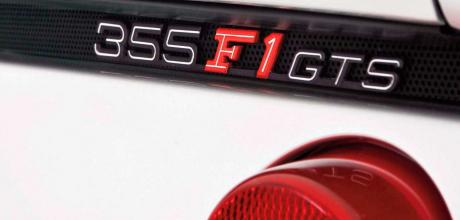Automatic for the People - chart the inexorable rise of Ferrari’s automated Transmission

It’s 10 years since Ferrari last made a car with a manual gearbox. We chart the inexorable rise of Ferrari’s automated Transmission
THE AUTOMATIC STORY
Considering it wasn’t until 1976 that Ferrari first offered an automatic gearbox option (on the 400 GT), it’s quite remarkable that today all Ferraris have automated gear-shifting. How did we reach this point? It all started with Formula 1. The Scuderia realised that there were significant performance advantages to an automated clutch and in 1989 the Ferrari Tipo 640 F1 pioneered wheel-mounted ‘paddles’ to shift gears without the need for a clutch pedal. Whatever doubts commentators had about this system were firmly allayed when Nigel Mansell won the 640’s maiden race at the 1989 Brazilian Grand Prix.
It was only a matter of time before paddleshift automated gearboxes found their way into road cars, and again Ferrari was the world’s first. The ‘F1’ automated manual transmission arrived with the 355 F1 of 1997. Maranello’s evocative H-gate was gone; in its place were two buttons (one to toggle between automatic and manual modes, the other for low-grip conditions) and a small lever to engage reverse. But the real novelty was lurking behind the steering wheel: F1- style ‘paddles’ for manual gearshifts. And it was lightning-fast: Ferrari guaranteed that the F1 ’box changed cogs faster than anyone could change gears manually.
It’s important to realise that the six-speed gearbox itself was exactly the same as in the regular F355; it was simply the method of changing gear that was new, with electro-hydraulics doing the shifting. The early F1 ’box worked well, attracting about 25% of buyers, but it got better, and more popular, inthe later Ferrari 360 and 430 versions. Ferrari placed such significance on its paddle-shift system that, when it launched the Enzo in 2002, F1 transmission was the only available option. Here was the definitive moment when the writing was on the wall for manual gearboxes.
When the 599 GTB Fiorano of 2006 introduced a new ‘F1-SuperFast’ ’box, gearchanges could now be completed in just 100 milliseconds. There was another first that went along with this system: a new Launch Control mode for maximum acceleration off the line.
2008 saw a huge leap forwards with Ferrari’s first dual-clutch transmission (DCT), in the California. This featured two clutches that pre-engaged automatically, lining up the next gear in advance so that shift times and driver feel were both keener. The ratio count was now up to seven.
The first mid-engined Ferrari to get DCT was the 458 Italia of 2009. This marked the moment when Ferrari moved definitively to auto: there was never a manual option for the 458. The simple fact was that customers were no longer buying manual cars: only 199 manual ’box 612s were sold, thirty 599s and a mere two Californias. Ferrari soon simply dropped the manual option altogether, the very last manual Ferrari (a 599) coming off the line in 2011.
Things moved on again in 2019 with the SF90 Stradale and Roma, both using a new eight-speed DCT that’s more compact and lighter than its predecessor. Shifts are faster and smoother thanks to low-viscosity oil and a dry sump. The SF90 Stradale’s gearbox has one further innovation: it has no reverse gear, just an onboard electric motor instead.
Ferrari Autos: Expert View
We asked Ferrari DCT transmission specialist, Scott Ladd of DCT Scuderia (07515 121741), for his views about Ferrari automated gearboxes. Here’s what he told us:
“The F1 gearbox first seen in the Ferrari 355 was an absolute revolution in its day and was vastly improved throughout its lifetime. The fast-changing 430 Scuderia, for instance, is an amazing car to drive – I personally quite like the torque reduction feel you get when changing gears over the newer, almost seamless DCT gearbox.
“The Getrag DCT first seen in the California in 2008 and used in everything up to the LaFerrari was another huge step for Ferrari: a seven-speed unit housing everything except the cooler and ECU, no external accumulator, pumps, actuators or valve bodies, and even housing its own twin wet bathed clutches (as many launch controls as you like).
“The new gearbox did, however, have problems. Initially there were oil leaks and wires chafing internally, which soon escalated to sensor and other problems, meaning Ferrari was inundated with gearbox warranty claims, leading it to train technicians to repair units, including me.
“The DCT gearbox has undergone improvements since: for instance, software updates, better pressure sensors and a strengthened sandwich plate, but like all mechanical components, things do fail. Repair costs can be expensive. The biggest job is replacing the speed sensor, which entails removing the gearset – you wont get much change from £10k from a dealer. If all fails (the diff blows up, for instance), a new gearbox costs around £25k. If you fit a secondhand gearbox, there’s a very big chance it will suffer clunky shifting and bad drivability – and Ferrari will not release a file for second-hand gearboxes, so it’s always worth repairing what you have in front of you if possible.
“Overall the DCT gearbox is brilliant. It can withstand a huge amount of torque, you can cruise around town seamlessly or have a truly mesmerising track day and not worry about cooking the clutch like the old F1 gearbox.”

